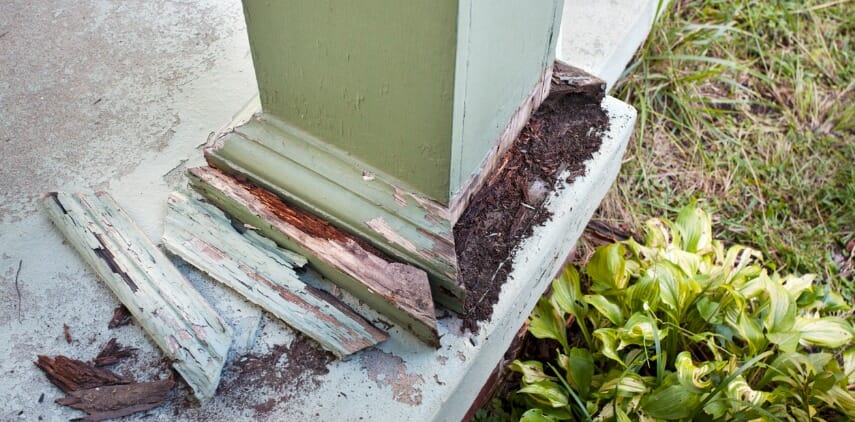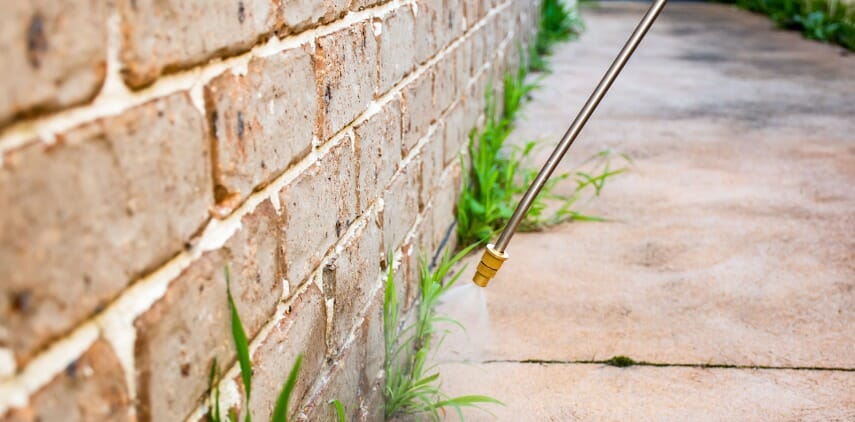Termites are one of the most destructive pests in the world, causing billions of dollars in damage to crops and homes every year. If a homeowner discovers termite damage, it will likely cost them an average of $3,000.
In many cases, property owners don’t know whether their homeowner’s insurance will cover the cost of repairs. The answer to this question is not always straightforward, as insurance coverage varies greatly.
Some insurance policies specifically exclude coverage for damage caused by pests like termites. In other cases, coverage may be included but with certain limitations. It is essential to carefully review your policy to determine what is covered and start pest control prevention if you haven’t already.
What is Termite Damage?
Termites are small, wood-destroying insects that can cause serious damage to homes and other structures. Although termites are often mistaken for ants, they are more closely related to cockroaches.
Termites eat cellulose, which is a major component of wood. As they eat away at the wood, they undermine its strength and stability. If left unchecked, termite damage can be extensive and expensive to repair.
Homeowners should look for signs of termite damage, such as holes in baseboards and peeling paint resembling water damage. If you suspect termite damage, contact a professional pest control company as soon as possible to have the problem addressed.
What is Homeowners Insurance?
Homeowner’s insurance is a type of property insurance that covers losses and damages to an individual’s house and the belongings in it. Homeowner’s insurance also covers the individual’s liability for injuries suffered by others on the property or caused by the individual or members of their family.
Most standard homeowner insurance policies cover fire, windstorm, theft, and personal liability. Some policies also cover additional perils, such as earthquakes and floods. Many insurers offer policy riders that cover more specific risks, such as jewelry loss or identity theft.
While most mortgage lenders require borrowers to purchase homeowner’s insurance, even if not required, it is still recommended as it offers financial protection in case of a covered loss.
Signs of Termite Damage in the Home
Termites are often difficult to detect, as they spend most of their time in darkness. However, there are a few tell-tale signs that can indicate the presence of termites, namely:
- Discolored or drooping drywall
- Stuck windows and doors
- Excessive squeakiness in floorboards
- Small, pinpoint holes in drywall
- Tiles loosening
- Wood that sounds hollow
- Mounds of termite pellets (like piles of salt or pepper)
- Bubbling paint
- Sawdust around wood surfaces
- Piles of wings left after swarms
- Mud tunnels on exterior walls or foundation
If you see any of these signs, it is crucial to contact a pest control professional as soon as possible. Because termites can go unseen for months or even years, by the time you see a termite, there might already be severe damage to your home. Leaving it untreated any longer may have devastating consequences.
Does Homeowners Insurance Cover Termite Damage?
The answer to this question is “it depends.” Some homeowner’s insurance policies specifically exclude coverage for termite damage, while others include limited coverage.
Some insurers offer riders or endorsements that provide coverage for termite damage. If you live in an area where termites are a common problem, consider adding this coverage to your policy. The cost of repairing termite damage can be extensive, so it’s essential to ensure you don’t run into problems in the future.
Homeowner’s insurance covers termite damage in a few ways:
- By covering the cost of repairing any damage that the termites have done. This can include replacing wood that has been eaten away or fixing structural damage.
- By providing replacement coverage. This means that if the termites have completely destroyed your home, your insurance will pay to have it rebuilt.
- Pest control coverage. This can help cover the cost of treating your home for termites and other invasive bugs and prevent them from returning.
It is important to review your policy carefully to determine what is covered and what conditions specifically exclude coverage for damages caused by pests like termites. In some cases, coverage may be included but with certain limitations.
Contact your insurance agent or company representative if you have questions about your homeowner’s insurance policy or need help filing a claim. They will be able to help you understand your coverage and take the necessary steps to file a claim.
How to Prevent Termite Damage in the Future
Preventive measures can help homeowners protect their property from costly termite damage. There are several steps that homeowners can take to prevent termite damage:
- Reduce moisture levels in and around the home. Termites are attracted to damp wood, so fixing any leaks or water drainage problems is essential.
- Remove any wood debris or mulch from around the foundation of the home. This can provide a source of food for termites.
- Get regular inspections done by a pest control specialist. Regular inspections by a qualified pest control professional can help identify potential problems before they cause severe damage.
Review and Update Your Homeowner’s Insurance Policy
Termites can cause a lot of damage to homes and other structures, so it is essential to be aware of the signs of their presence and know how your homeowner’s insurance policy covers termite damage. Taking precautions can help you protect your home and property from costly termite damage.
Learn more about homeowner’s insurance policies at Finance is us.
Disclaimer: All content on this site is information of a general nature and does not address the circumstances of any particular entity or individual, nor is the information a substitute for professional financial advice and services.






